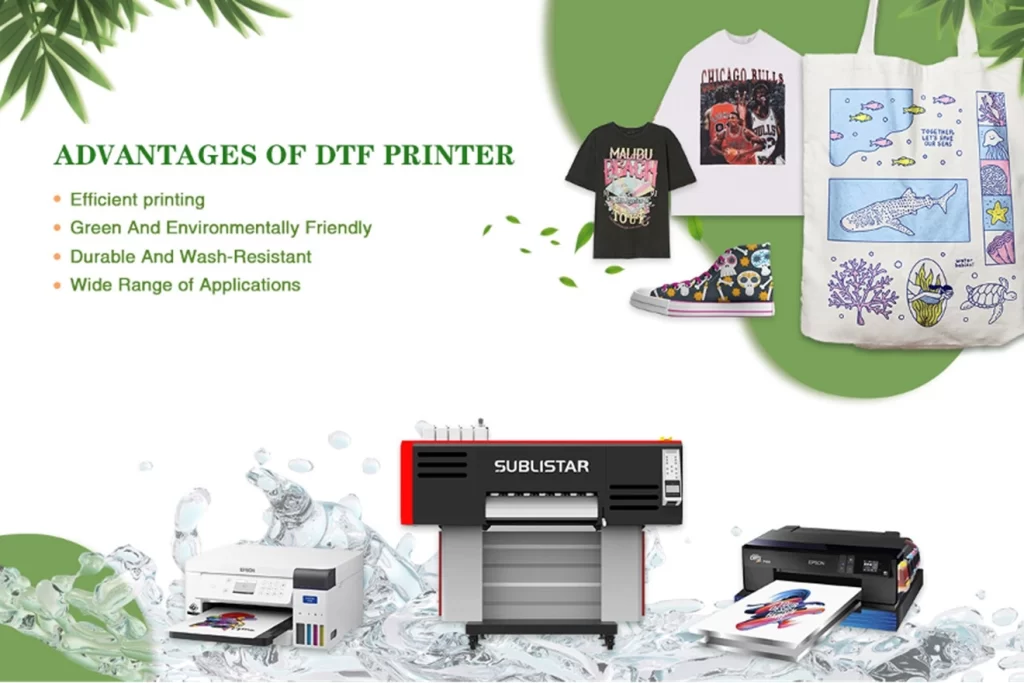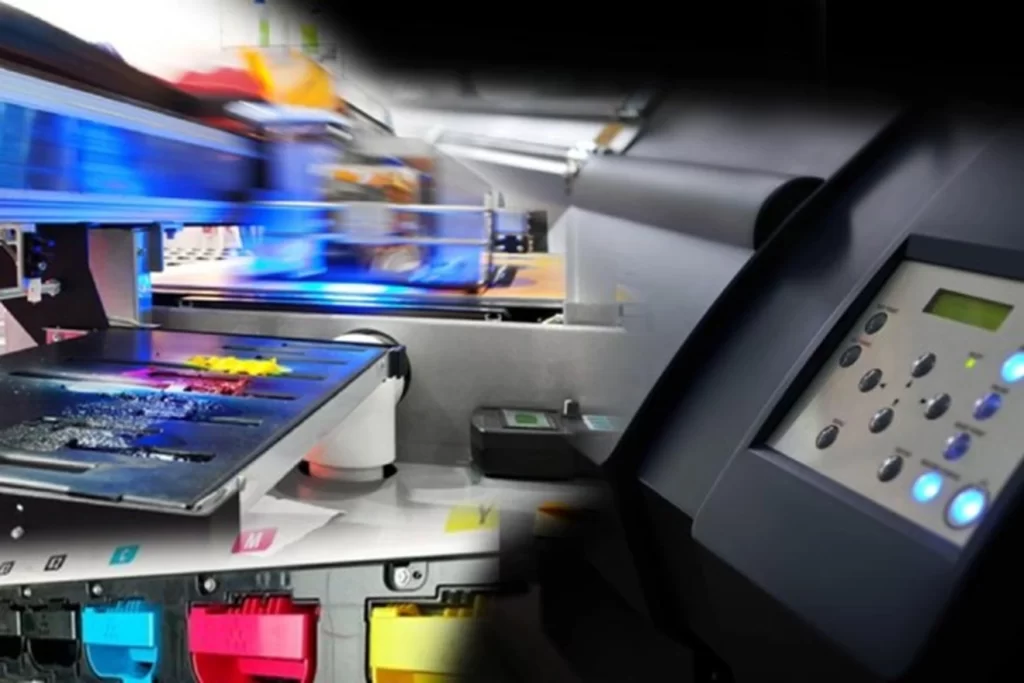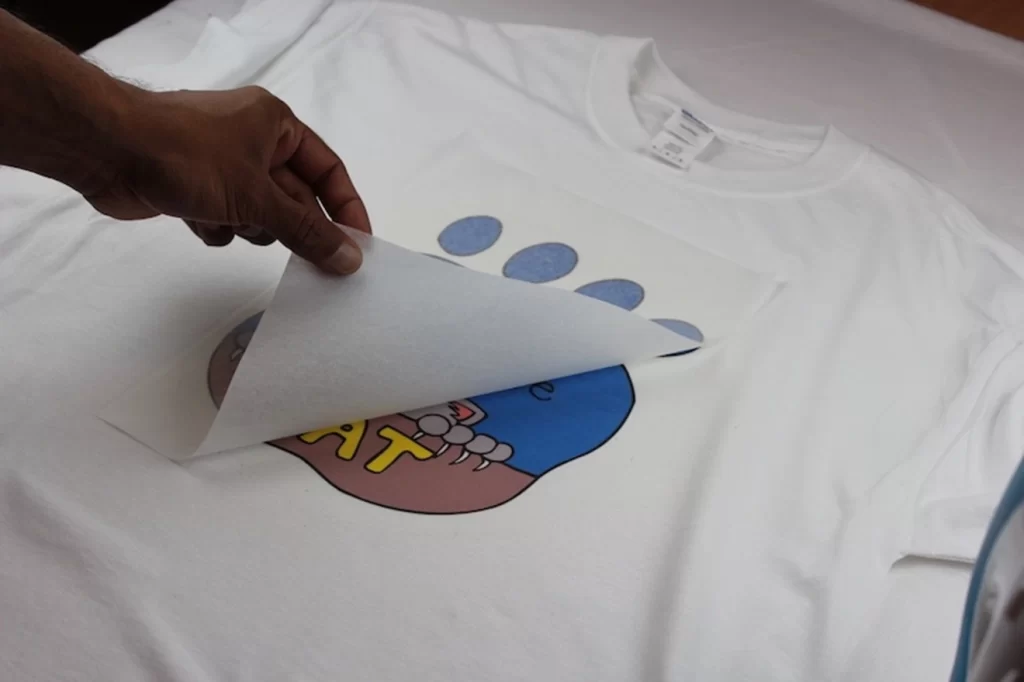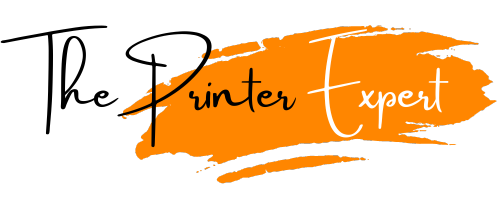DTF Printing Advantages for Printing Business [2025]
This post is here to guide you in making your best decision. In this blog, I’ll delve into the key DTF printing advantages, making you a well-informed crafter or business owner.
DTF printing has become a trend in a big way, especially for small businesses and entrepreneurs. This technique has been used to customize T-shirts, signage, hoodies, tops, hats, and promotional material.
However, this printing technology is common for businesses looking to promote their custom apparel brand. But a simple question comes to mind most of the time. Why do apparel businesses not use other types of printing techniques?
The answer is as simple as the question. This new printing technology offers a unique blend of advantages that make it stand out from traditional methods like screen printing and DTG (Direct-to-Garment).
Suppose you want to start a printing line and search for the best printing technique. If you come across theprinterexpert.com that day would be your lucky day. As it is now!!
I suggest you choose a DTF printer to bring countless ideas with a complex graphic to life onto the fabric with high-quality results. Chances of color distortion are less than efficiency for final prints.
Table of Contents
What are the DTF Printing Advantages?
DTF printing is the GOAT for getting fabric designs on point. As a T-shirt printing business owner, it’s important to know its ins and outs to maintain the quality of your production. When you better know about your product, you can guarantee the best items to your customer.
When you choose DTF transfers, errors to harm the quality of prints are less. This way you can build a strong bond with your potential buyers. All this is just because of the advantages and factors drawn by DTF printing.
Versatility in Fabric Choices
One of the standout DTF printing advantages is its versatility in fabric choices. Unlike some printing methods limited to light-colored fabrics, DTF printing shines on a wide variety of materials. Print on cotton, polyester blends, and dark fabrics – the DTF process offers excellent adhesion and durability on most surfaces. This opens a world of possibilities for T-shirts, hoodies, hats, bags, and even shoes!
A sister technology of direct-to-film-printing called UV DTF sticker printing; it allows you to print designs and logos onto non-textile material like plastic, wood, metal, ceramic, and many more. Hence, it’s proved that this printing method is versatile, allowing you to expand your products.
High-Quality Prints
DTF printers use CMYK inkjet technology to deliver high-quality prints with sharp details and vibrant colors. Since the ink is directly applied to the fabric, the prints faithfully capture the soft feel with as many color schemes as you desire.
It enables businesses to print designs with an unlimited number of colors without adding an extra layer of transfer paper. This results in prints retaining their color intensity even after multiple washes, making them ideal for garments that undergo frequent laundering.

Cost-Effective Production
When you come up with a business, the first and only care about is your budget and not anything else. Unlike screen printing and heat transfer printing methods, DTF printing is a cost-effective option for small to medium-sized production runs.
Printing DTF needs no bulky screens or expensive setups either and the ink wastage is significantly controlled keeping the costs low. It helps to make it a more affordable choice for businesses seeking to lower their production costs without hampering the product quality.
Durability and Washability
A major concern about DTF transfers is the durability of the designs. A business owner always wants to deliver high quality to his customers. Fortunately, DTF prints are known for their impressive resistance to washing, cracking, and peeling. The inks are pretreated with a special adhesive that ensures a strong bond with the fabric, even after multiple washes.
The prints typically endure washes up to 60°C, which is the best for everyday use items like t-shirts, bags, and hats. This makes DTF printing ideal for garments meant for frequent wear and tear.
Quick Turnaround Times
Deadlines don’t wait, and neither does the printing process. DTF eliminates the pre-treatment step required in some printing methods, it will efficiently fulfill the orders with tight lines. This translates to quicker turnaround times, especially for smaller batches.
The ease of use and minimal setup involved further streamline the process, making it efficient for both large and small printing projects. Since direct-to-film printing doesn’t require a lengthy procedure, there are higher chances of progress in the printing business.
Environmentally Friendly
While not entirely solvent-free, DTF printing uses water-based inks that are more environmentally friendly compared to traditional plastisol inks used in screen printing.
There is no use of transfer paper that reduces the carbon footprint associated with textile printing. This can be a deciding factor for eco-conscious businesses and consumers.
Ease of Use
Another DTF printing advantage is its ease of operation and minimal training requirements. DTF printing boasts a relatively simple learning curve. The process involves printing the design onto a film, applying powder, and then heat-pressing it onto the garment.
This makes it accessible to beginners and small businesses without extensive printing experience. Investing in the DTF printing business can reduce the time and money required to train staff for complex screen printing or other traditional printing method. It ensures you can grow your business with ease.

Disadvantages of DTF Printing
While DTF printing advantages are defined, it’s important to be aware of its limitations before making a decision. Here’s a breakdown of some key disadvantages to consider:
Maintenance Requirement
DTF printing equipment needs to be regularly calibrated and maintained to produce high-quality crisp prints. A DTF printer, heat press machine, ink cartridges, and DTF powder shaker machine need maintenance and proper weekend or monthly cleaning.
Neglecting maintenance can cause print quality degradation and clogged print heads. It will not only affect your prints but also increase downtime. In short, DTF printing may need more upkeep than other digital printing techniques like DTG printing or screen printing since it uses specialist equipment.
Fumes and Ventilation Requirement
The use of certain DTF inks may release Polymer in vapor form during the DTF Process. These ink-release fumes should be effectively managed. The most common method for this purpose is air filtration using either a specialized fume extractor or ventilation to the outside. This can’t be missed, and proper ventilation is a necessity in the workplace.
Reduced Breathability
Compared to methods like direct-to-garment printing, DTF transfers slightly reduce the breathability of fabrics. The ink layer sits on top of the fabric rather than soaking in, which makes some garments feel stiffer, especially on lighter materials. This may not be ideal for all applications, particularly activewear.
Limited Color Gamut
DTF printing uses an adhesive powder to hold the ink in place. This powder can limit the number of colors effectively used in a design, especially for complex prints with many colors or gradients. Each color might require a separate layer of adhesive, adding complexity and potentially increasing cost.
Environmental Consideration
The DTF process uses specific inks and powders that may release fumes during printing. Proper ventilation in a working environment is necessary to avoid inhaling these fumes. Additionally, the disposal of used transfer film and powder must follow the recommended guidelines.
Is DTF Printing Better than Heat Transfer?
Heat transfer is also a popular printing method to create designs on fabric. However, this method has some limitations that make DTF printing a better option.
- DTF printing excels in print quality with sharp details and vibrant colors due to direct ink application onto the fabric.
- DTF prints are more durable and long-lasting as compared to heat transfer prints.
- DTF printing boasts compatibility with a wide range of fabrics and is cost-effective for small print runs while heat transfer may not suitable for one-off projects.
Ultimately, the choice between DTF printing and heat transfer hinges on the specific needs and priorities of the project, with businesses weighing factors like quality, cost, and customization to determine the best fit for their printing requirements.

Is DTF Printing Better than Screen Printing?
Although screen printing offers great opportunities for businesses to generate high ROI. But there are a few limitations that make DTF printing advantages more obvious:
- DTF printing produces high-quality prints with better color-vibrancy.
- With DTF printing, there is no fabric or color limitation. You can print on multiple fabrics with CMYK and white color ink.
- DTF printing is an easier and smoother process than DTF printing, as no screen preparation is required for the operation.
Choosing between both printing methods depends on factors like print quality, fabric compatibility, production cost, and the specific needs of the project you want to print on.
Is DTF Printing Better than DTG (Direct-to-garment) Printing?
While DTG printing has its advantages, DTF printing offers several benefits that make it a strong competitor for various projects:
- DTF printing is more versatile when it comes to fabric types. Unlike DTG, which works best on cotton, DTF can be used on cotton, polyester, blends, and more.
- No pretreatment is required with DTF printing, making the process quicker and easier compared to DTG, where pretreatment for t-shirts is needed to get vibrant colors and durability.
- DTF prints are generally more durable when it comes to washing, as the adhesive layer bonds well with the fabric, offering better longevity than DTG.
- For small orders or intricate designs, DTF printing is more cost-effective, while DTG tends to work better for larger batches or when a soft, natural feel is desired.
Choosing between the two depends on your fabric, desired print quality, and production needs.
The Bottom Line
DTF printing advantages provide a powerful kick to printing business owners or people who want to have custom vibrant designs on different surfaces.
Due to its ease of use, low cost, and stably high quality, DTF printing has the potential to lead the field of textile decoration and more. The technology does have its drawbacks but DTF printing favorable aspects are more than its counterpart.
It is the future of textile printing technology. Whether you are a fashion designer, a textile manufacturer, or a business owner seeking more sophisticated ways of applying high-tech prints to your brands, this technique is a must-have. That said, if you believe that this is just the right place for you, hurry up!
